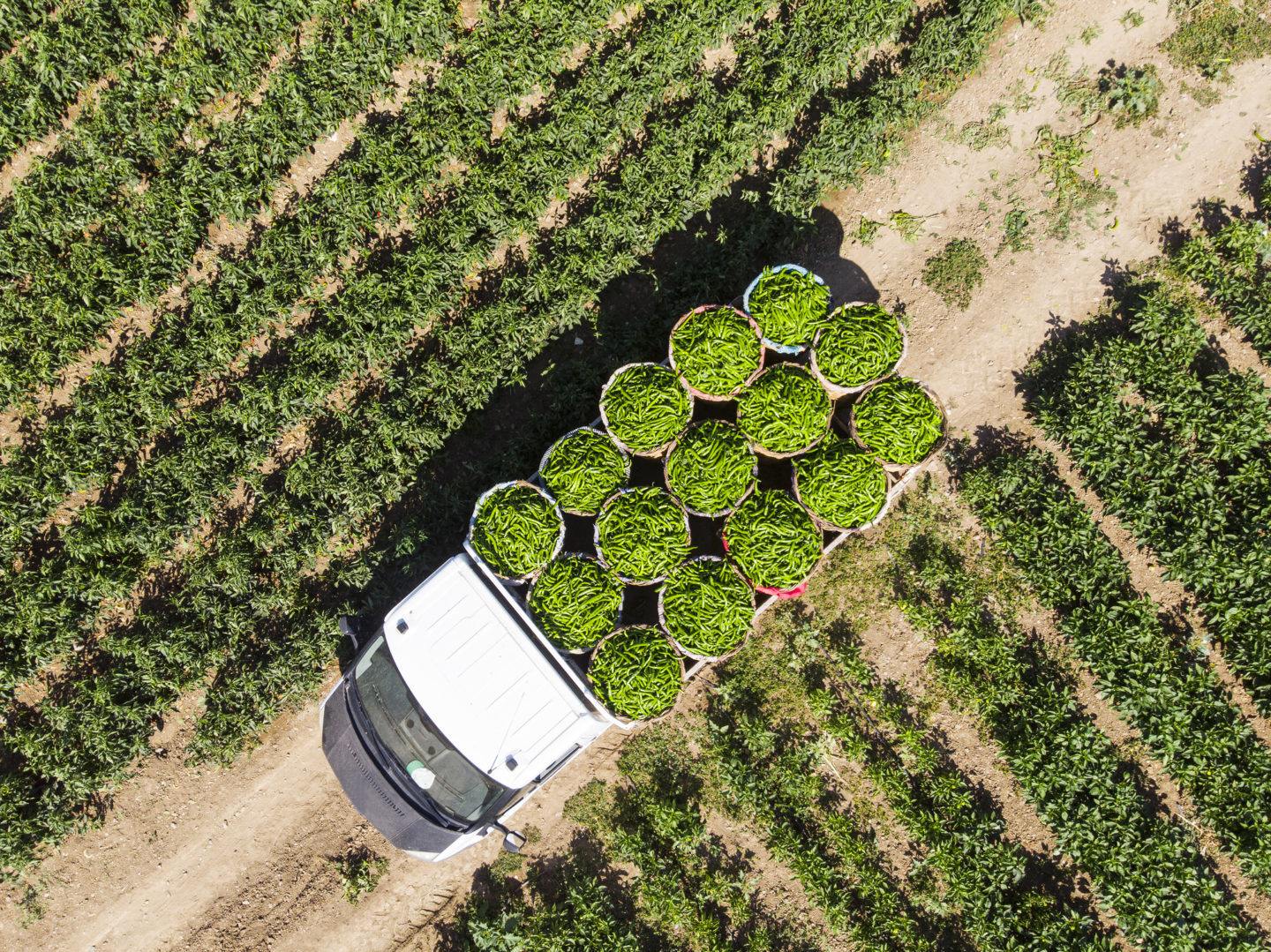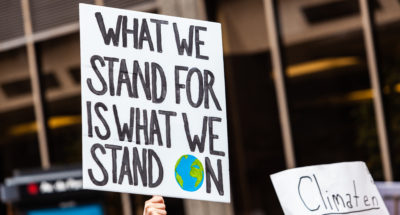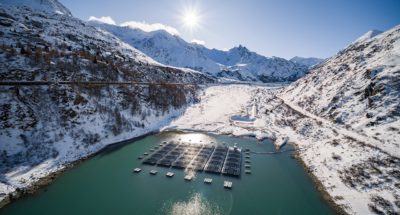
13 sustainability trends driving business in 2023
Firms around the globe are shifting their focus on sustainability from talk to action....

Published May 25, 2025 in Sustainability
The world’s food chain needs to shift to a regenerative agriculture model to meet the challenge of a growing global population, argues Geraldine Matchett, co-CEO of Dutch nutrition company Royal DSM.
Intensive farming methods, pesticides and fertilisers have provided more food as the world’s population has tripled over the past 70 years, leading also to a reduction in the numbers living in poverty. But this has come at the heavy price, she said in an interview.
“In doing that, we’ve destroyed about a third of the topsoils in the world, because very intensive agriculture destroys the micro-organisms that keep the soil alive. And as you do that, your yields go down and then you say: ‘I can fix that with more fertilizers’, but you’re simply destroying the soil even more. So it becomes a barren base,” she said.
“When we’re looking today at how we can feed 7.8-7.9 billion people, and maybe 10 billion people in the future, in a world where these topsoils are being destroyed every single year, there’s an estimate that we have only 60 crops to go, so 60 years before all topsoils are very depleted. So this intensive farming, while feeding a lot more people, has actually destroyed the planet,” she explained.
A switch to a sustainable food supply system is therefore urgently needed. The good news is that the solutions are already known. “It’s about regenerative agriculture. It’s about not tilling the soil. It’s about rotating crops. It’s about applying ways of producing food that we can do, but we’re not doing because of the current set-up of our food and agricultural systems. It requires a system change, as opposed to innovation or individual company contributions,” she said.
The system change must involve the entire food industry, but it has to start with major changes in farming. “It requires the whole chain to start from a regenerative agriculture point of view and say that farmers should change their practices,” Matchett said.
However, farmers can’t make this change by themselves. They need the support of all the other links in the chain. “The start is hundreds of millions of farming families whose livelihoods are already pretty difficult today. They don’t have the financial resources or the skills to make this transformation unless they are supported by all the stakeholders around them, so the whole food chain needs to align. But it’s also very important that the farming communities are in the spotlight as heroes, as the source of the change, and not as villains.”
Matchett said the private sector has a key role to play, alongside governments, industry organizations and unions. Companies can no longer just think about their own operations but need to have a broader purpose, which means having an impact by helping to solve wider problems. “Your success partly depends on your ability to help the whole chain address its biggest challenges. And the biggest challenge is often either the social or environmental impacts that we’re having,” she said.
At DSM, this has involved focusing on the environmental footprint of dairy products. “There’s a great reason to have dairy products in terms of diets and nutrition, but how do you address the footprint? One of the many innovations that we’ve been working on is how to reduce the environmental footprint of dairy and meats.”
As the world leader in micronutrients for animal feed, DSM has been looking at ways of reducing the methane generated by cows, which is a significant contributor to climate change. “At first, people found this very strange, but it is connected with climate change – methane is 20 times more potent than CO2 – and it also has to do with agriculture. So, over time you realize that it’s a very serious value proposition because it is actually exactly the challenge facing the dairy industry today,” she said.
However, such efforts need to be backed by better tools for measuring environmental and social impacts, particularly in the food industry. “We need to do a better job at measuring things. For instance, the true cost of food does not exist. A lot of externalities are absolutely not reflected in the cost of food.”
DSM itself has undergone a major transformation during its 119-year lifetime. It started out as Dutch State Mines, a coal mining company, then it moved into petrochemical refining, commodity chemicals, biotech and fine chemistry, and today it is one of the world’s biggest food ingredients companies, with 85% of its sales in nutrition and health. Much of the transformation has been achieved through acquisitions and disposals, but this has been accompanied by an increasing focus on sustainability, which is built into its bonus and incentive systems, with 50% of rewards linked to the company’s financial performance and 50% to social and environmental goals. “We are a triple bottom line People-Planet-Profit company, so we said: ‘Let’s walk the talk and signal to everybody that both are important’.”
Companies’ sustainability strategies need to be underpinned by three components, said Matchett, who categorizes these as: Reduce, Enable and Advocate. Reduce relates to the management of your company’s impact on the world, while Advocate involves arguing the case for wider actions to tackle climate change, and the previous generation of business leaders made a good start on both tasks. Enable involves using your own activities to seek broader changes, such as DSM’s push for more sustainable agricultural practices, and she says this is a job for the next generation. “Enable is today’s challenge. It means that leaders who are in position today, or emerging leaders, start thinking about how their activities actually enable them to alter the system.” This represents a paradigm shift from the time when companies’ only focus was on prices and commercial pressures. “Now it’s about what are we trying to achieve? And how do we do it together? Which is a fundamentally different way of looking at how to make a company successful.”
This means putting sustainability at the core of the company’s strategy, making it something that is handled at board level, rather than just by a separate sustainability department, and embedding it into individual business cases. “You will not be successful if you ignore these things, so put them in. At first you may not be rewarded for it, but over time you will. So doing well and doing good in our view are intrinsically linked, but on slightly different timeframes,” she says.
It also involves looking well beyond your own organization, working with suppliers and customers to change the whole value chain. “You have to think about working upstream and downstream in an integrated end-to-end system way,” she says.
The Task Force on Climate-related Financial Disclosures has prompted many companies and investors to think about the cost of the impact of climate change on a firm’s operations if such systemic changes are not made. “In some cases it’s catastrophic, and therefore you’d much rather help the world transition to a situation in which climate change is limited to 1.5˚C. It requires some sacrifices and some investment now, but it’s nothing in comparison to the mitigation that is needed in a world that goes above 2˚C and all that comes with that,” she says.
Matchett says one silver lining of the COVID-19 pandemic is that it has shown that it is possible to make big changes when they are really needed: “We saw how quickly things can move when everybody understands the problem and is aligned in having to react. And then you realize the power of companies, because you have the authority and the means to make things change overnight.”
“When the crisis hit, we moved fast. Unfortunately, when it comes to food, if we wait until the crisis really hits, it will be too late. So that’s the challenge: how do we not wait for the crisis?,” she says.

1 hour ago • by Natalia Olynec in Sustainability
Firms around the globe are shifting their focus on sustainability from talk to action....

3 hours ago in Sustainability
Despite an increase in diversity policies and training offered by companies, organizations are still challenged to activate the topic of diversity and inclusion....

3 hours ago in Sustainability
Companies are facing immense pressure to evolve their business strategy in view of climate change...

3 hours ago in Sustainability
To be viable, sustainable investment must be both green and profitable....